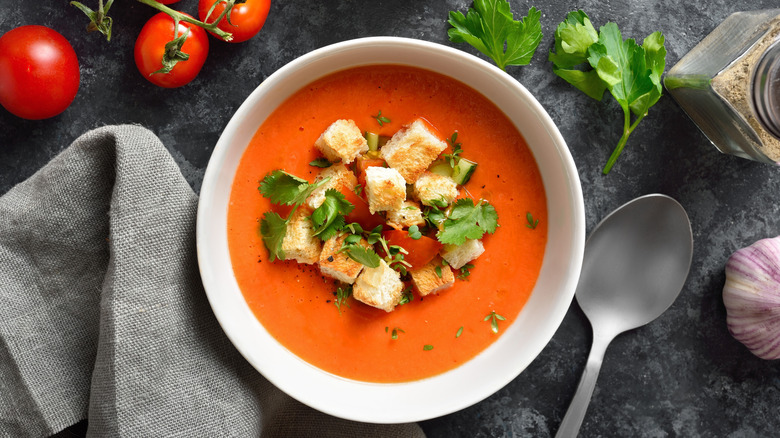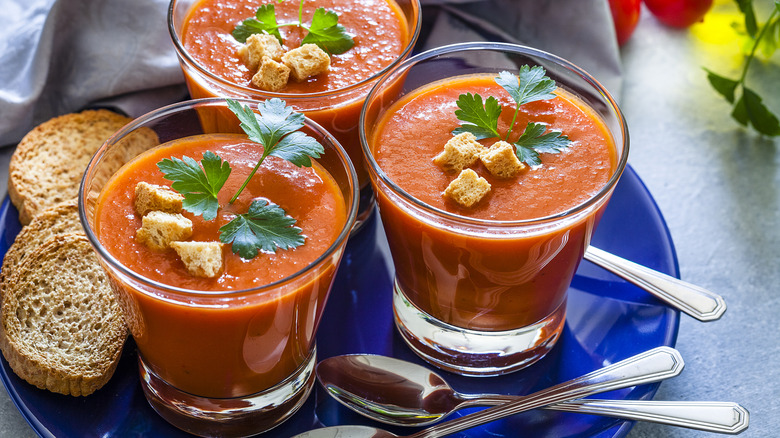Why Is Gazpacho Soup Served Cold?
We may receive a commission on purchases made from links.
Gazpacho soup is bursting with refreshing, bright, sweet and zesty vegetable flavor. While hot soup warms you up on a cold day, this Spanish soup is served cold to help cool you down in the summer, or any time you crave a light, garden-fresh meal or appetizer. The chilly temperature of the uncooked soup is a reflection of its origins, Andalusia — the hot, dry southernmost region of Spain. Gazpacho is nourishing, fresh, and perfect for slurping during scorching Andalusian summers.
Despite what it might look like, gazpacho is not just cold tomato soup. While recipes can differ, traditional gazpacho is made from a blend of fresh tomatoes, cucumbers, onion, garlic, bell peppers, vinegar, olive oil, salt, and pepper. Also, pieces of stale or day-old bread have historically been added to the soup to help thicken it. The word "gazpacho" is actually derived from the Arabic word for "soaked bread". The bread makes the soup hearty and filling without adding any strong flavor that will dampen the fresh veggie taste.
Typical garnishes for this cold soup include croutons, chopped veggies and/or fruit, and pieces of egg. However, toppings and ingredients vary regionally, for example, gazpacho made in the Málaga province of Andalusia often includes almonds and grapes. Impress your friends and family and follow a few helpful tips to make your own tasty, smooth, garden-fresh soup at home.
Tips for a smooth, refreshing garden-fresh soup
The origin of Gazpacho soup is believed to date as far back as the 7th Century. It was originally a thick soup made of ground bread, salt, garlic, olive oil, and vinegar. Tomatoes and peppers were added to the recipe during the 16th Century when they were brought to Spain. As with many recipes, people have found ways to put their own spin on it by adding non-traditional ingredients. For instance, a creative way to use up leftover watermelon is to add it to gazpacho soup. Or, for a zestier version, the secret weapon to spice up your soup might be sitting in your fridge, like your favorite hot sauce.
Since the soup is uncooked and pureed, it's important to peel the tomatoes and cucumbers for a smooth consistency. To blanch your tomatoes, start by scoring the bottom of each tomato with a small "X" to help the skin remove easier. Boil a large pot of water, then remove it from heat and add the tomatoes, allowing them to soak for 1 to 2 minutes. Carefully transfer the tomatoes to a large bowl of ice water. Once cooled, you should be able to easily remove the skins.
To achieve a velvety consistency, make sure to use the proper kitchen device. Mix your ingredients in a blender like the Black+Decker PowerCrush Blender or a food processor like the Hamilton Beach Food Processor. For extra smooth soup, consider using a strainer to remove any chunkiness.

